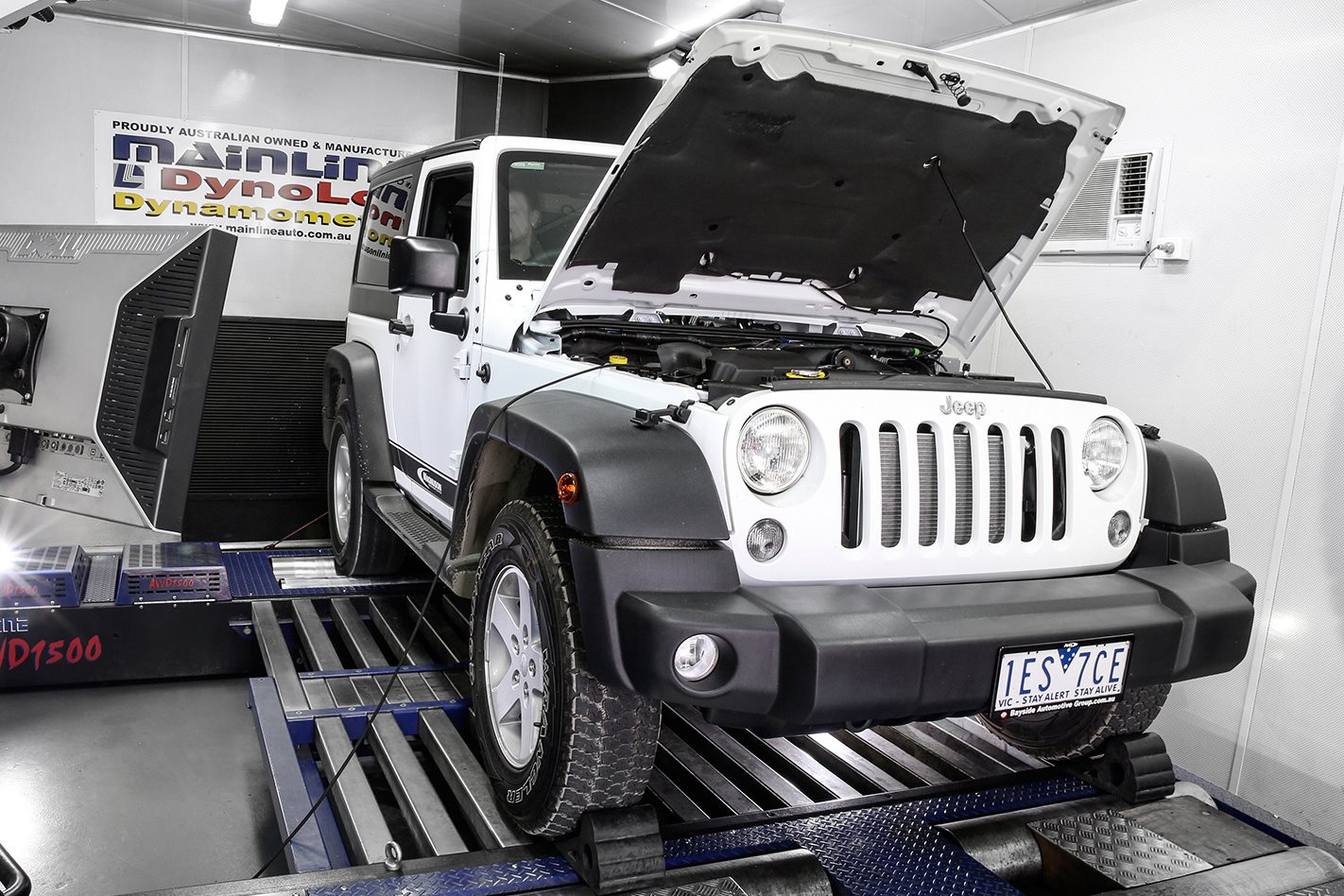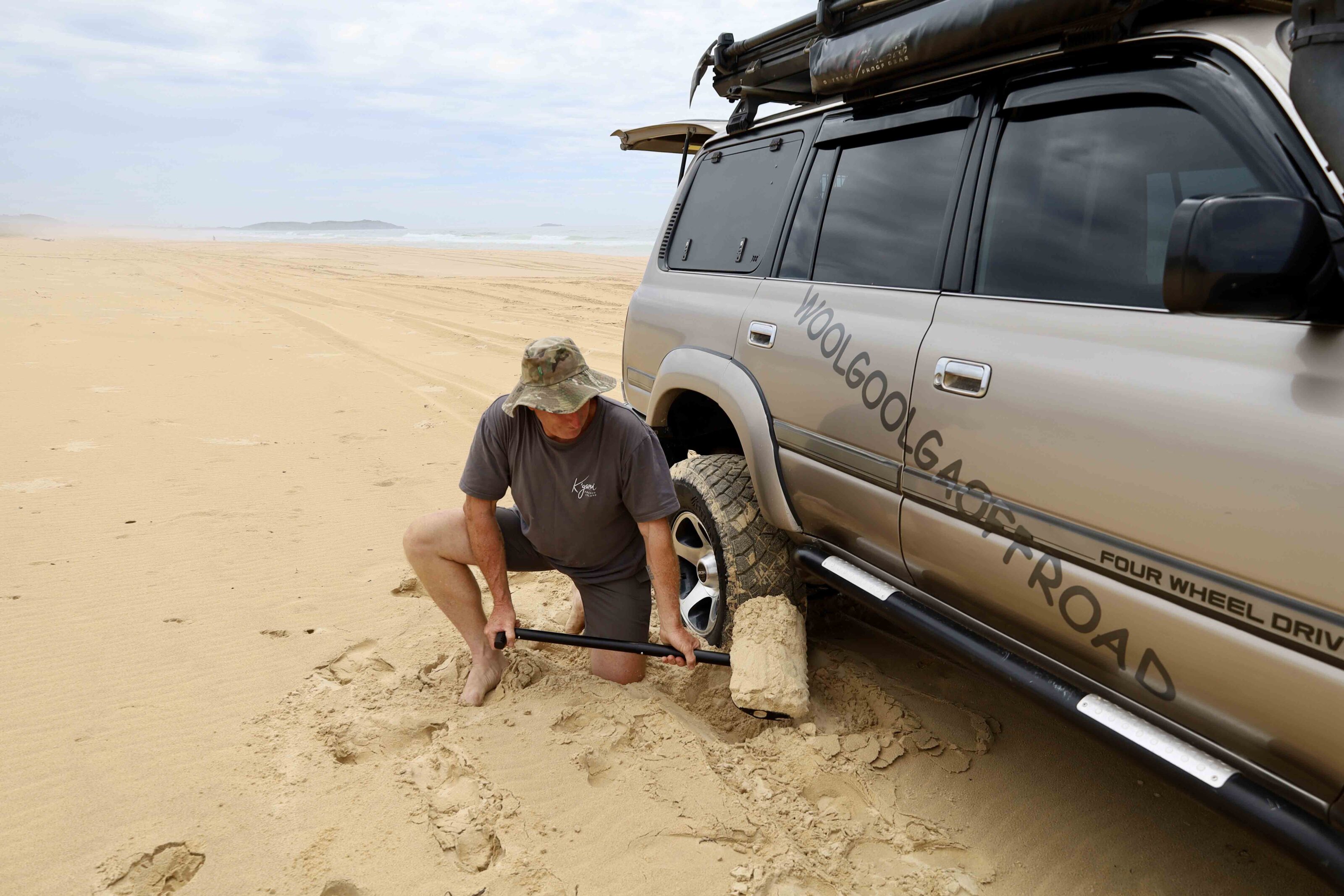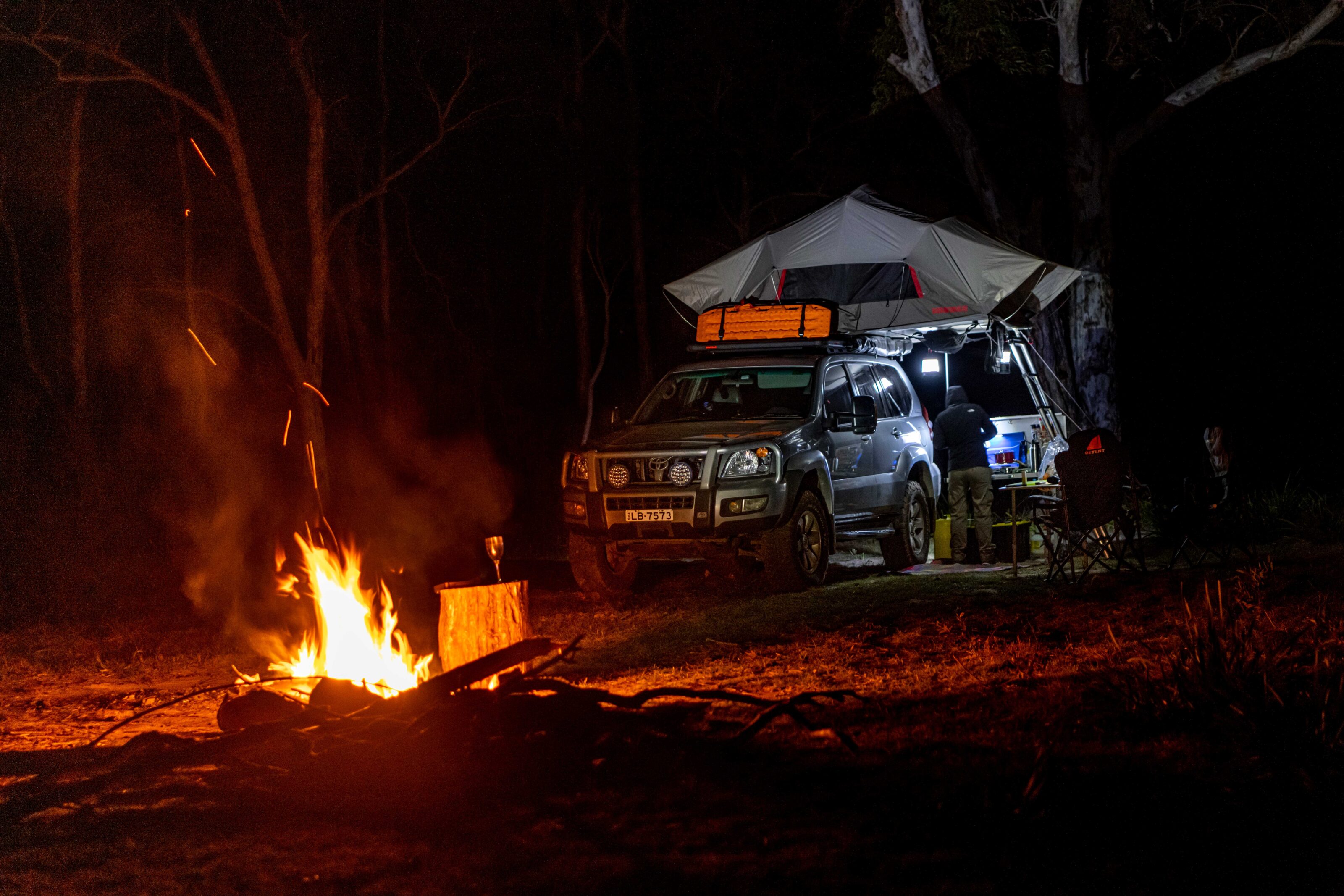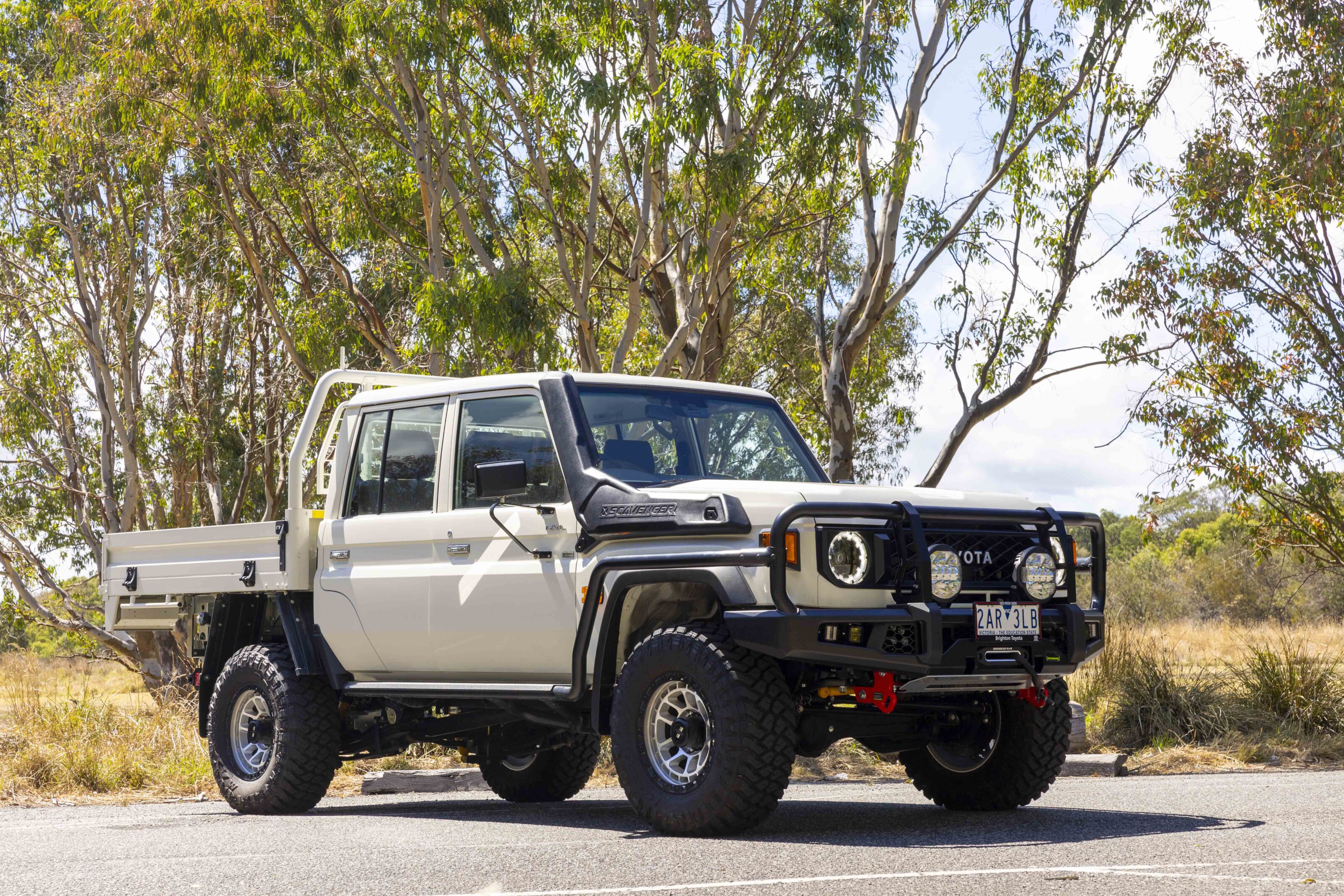Conventional wisdom – it’s what helps make the world go ’round.
It’s why a fool and his money are soon parted. It’s why you should never look a gift-horse in the gob. And it’s also why you replace your Jeep’s V6 engine with a V8 – preferably a late-model Hemi – when you decide it needs more squirt.
Okay, so upgrading to a V8 is nothing new. It’s a process that’s transformed many off-roaders. But it’s not necessarily for everyone. Maybe conventional wisdom only goes so far.
The alternative to more cubic inches is the same as it’s always been: forced induction. Turbocharging is one way, but, for an off-road weapon, when bulk low-down torque is the main game, supercharging might be a better option. This is where Magnuson Australia comes in with a new blower kit to suit the 3.6-litre Pentastar Jeep V6 – as seen in the white JK shorty you see on these pages.
The set-up comes complete with all hardware, belts, hoses, fasteners, wiring and even the necessary zip-ties, and it’s been designed by people who understand Jeeps. Not a single hole needs to be drilled in your Wrangler. Standard brackets and mountings ensure the whole lot fits neatly under the stock bonnet.
Specifically, we’re talking about a Magnuson TVS 1320 supercharger which, as the name suggests, moves 1.3 litres of air for every revolution of its twin screws. It blows through a water-to-air intercooler mounted directly below the supercharger (and replaces the stock inlet manifold) with its own coolant pump and reservoir, and a heat exchanger which sits in front of the stock radiator.
The Magnuson kit, as it arrives from the States, includes an in-house flash for the stock Jeep ECU, but Magnuson Australia prefers to use a HP Tuners system which gives 100 per cent controllability over all functions. In fact, the HP Tuners set-up can even improve things without the supercharger, simply by ensuring everything is optimised in normally aspirated form.
The HP tuning software can take the atmo V6 from a baseline, factory-stock figure of 104kW at the wheels, to a more meaningful 132kW with just an airbox change and a tune, and it’s also handy to crack the notoriously (and deliberately) cagey Jeep ECU ciphers.
But let’s not get ahead of ourselves: job one is to drive the stock Wrangler to see what it’s like fresh from the showroom. I’m not sure whether it’s deliberate or not, but the Pentastar V6 sounds like the old four-litre in-line six that served Jeep so well for many a decade. That said, it is noticeably perkier than those old sluggers and it actually cracks on okay if you don’t mind working the manual gearbox to keep it on song.
See, the real power of the stock V6 is stacked way up high, from about 4500rpm onwards, a figure many owners will never see on their tacho – it’s definitely not where you want the meat of the torque curve when you’re bouncing over rocks and through rivers.
I could also mention the crook, flimsy feel to the interior plastics and the pedal placement that was clearly done by a three-legged gimp, but that’s not what we’re here to discuss. And if you’ve test-driven a Wrangler, you can make up your own mind about that stuff…
After driving the stock Jeep, we wheeled it into Magnuson’s forensically clean workshop and started to tear down the stock intake system. Like most modern engine bays, the Wrangler’s looks like a plumber’s nightmare and, according to Magnuson wrench du jour, Mitch, it kind of is. Its saving grace is that the engine sits well back, snuggled up against the firewall, so there’s lots of room at the front of the relatively short V6. This, in turn, is pretty handy, because this is where the new serpentine belt that spins the blower needs to be threaded through pulleys and tensioners and around brackets.
“It’s a pretty straightforward installation,” Mitch admits, “but there’s not a lot of room in places and there are plenty of fiddly bits to deal with. The hardest part is actually sitting the blower in place, because it has to go in on a bit of an angle to get it to physically slide in.”
He’s not kidding and even with two pairs of hands, the blower unit needs to complete a half turn with pike before it finally agrees to mate with the intercooler and sit still long enough to be bolted down. It’s then a pretty quick process to button up the various hoses and vacuum lines, attach the throttle body and snap the blower belt into place.
With the intercooler’s coolant tank filled and the Jeep’s front panel back in place, the V6 fires up first hit with absolutely no hint of the modifications. All up, we’ve used up somewhere between three and four hours from atmo shut-down to supercharged start-up – it would have been five or six hours had I helped.
Back on the dyno, the brains trust starts fiddling with the tune and playing with different boost levels. Starting at seven pounds of boost, the Jeep cranks out 166kW at the wheels – up from 104, remember. At nine psi, the point at which it seems happiest, the number is 187kW. That’s 83kW more than stock. But remember that every one of those 83kW is devoted to forward thrust, since all the driveline losses have been overcome by the original 104kW.
So it should feel pretty perky. And it does. Again, it still feels and sounds like a Jeep, but when you floor the throttle, it elevates the JK from adequate to gee-whizz. The long sixth gear suddenly offers acceleration from 90 or 100km/h, whereas before it was purely decorative and anything like a hill or a headwind had you shuffling back to fifth. My seat-of-the-pants tests involved a long hill and a 35km/h start at the bottom. At my marker-point, the JK in atmo form was doing 100km/h in third. With the blower doing its thing, the Jeep was rocking 115km/h at the same point on the same hill.
The V6 will still rev, but it feels like the boost tapers off a bit at higher revs, leaving the Wrangler with a similar top-end rush but with a much fatter mid-range. And it’s not some scary, clutch-eating brute off the bottom end, either; you still need about 2000rpm showing before meaningful boost can be felt, but from there all the way to about 4500rpm, the torque curve is as fat as a road-house mixed grill.
Price? Hmmmm. The kit retails at $9500 with another $1000 for fitting and a further grand in tuning. But the Aussies reckon they’re about to hit up Magnuson head office for a sweeter deal, so watch this space. Even so, at less than $12,000 drive in, drive out, it represents a big chunk of change over that V8 conversion we were talking about.
The only detectable downside (and bear in mind this is the first Pentastar to have the Magnuson kit fitted in Oz) was that throttle tip-in off idle was a bit ropey. There was a big flat spot off idle and then a sudden rush of blood when I pushed through the dead zone of the throttle-by-wire set-up. The consensus among Magnuson’s Australian gurus was that the blower by-pass spring was too stiff and that a softer spring would make for a happier, smoother transition between throttle-on and throttle-off.
So, back in the lads went, changing the spring and enlarging the blower by-pass orifice. A small change was made to the throttle map to suit, and then we were back out on the road. Fixed.
There’s still a bit of hesitation, but it’s by no means a deal-breaker and I’d be prepared to bet that it’s simply a function of the snatch and shunt built into every manual-transmission Jeep Wrangler driveline. As in, they all do that, sir. It’s also worth mentioning that a Wrangler with the automatic transmission wouldn’t suffer from this in the first place, because the torque converter would absorb what tiny amount of shunt is still present.
In fact, an automatic Wrangler would also be a nicer car in the suburbs and would be even more formidable off-road, particularly in sandy or boggy terrain. Check the sales stats and it becomes clear that many people already know this. An auto being the pick of the bunch to supercharge? You know what that is, don’t you? That’s conventional wisdom, that is.





